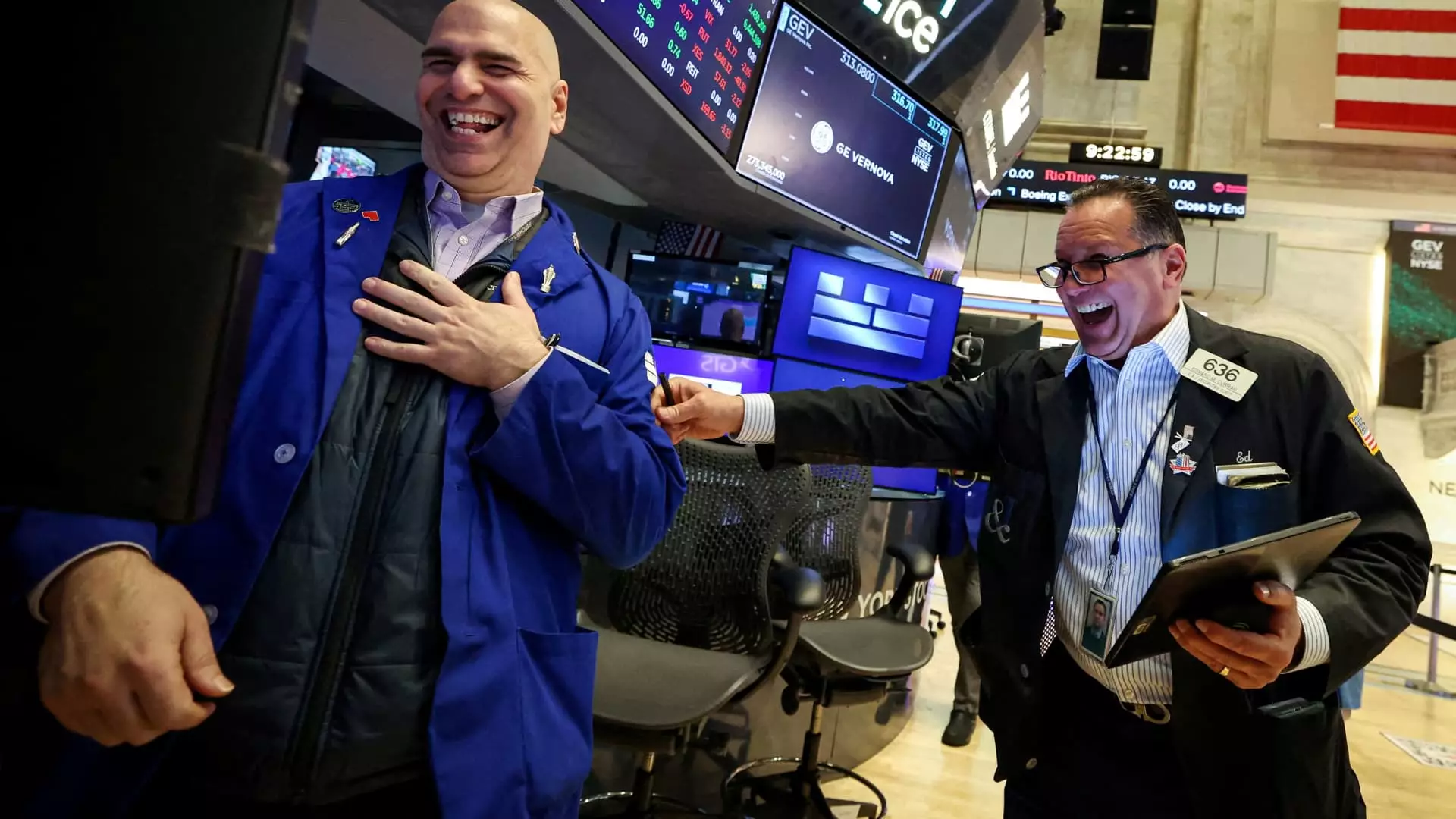In recent days, the stock market experienced a jaw-dropping rally, with indices like the Dow Jones Industrial Average soaring by more than 1,100 points in a single session. Excitement surged through traders and investors, yet a deeper examination reveals that this wild ride is not fueled by fundamental economic progress or promising new developments. Instead, it is largely the result of hedge funds scrambling to cover their short positions amidst a wave of turbulence in the market.
Short selling, a strategy where investors borrow assets with the hope of profiting from a decline in value, often leads to high-stakes drama when the market unexpectedly moves in the opposite direction. In this case, hedge funds that had bet against stocks were forced into a frenzied buying spree as prices rose, creating what is known as a “short squeeze.” This phenomenon illustrates just how fragile market dynamics can be, manipulated more by speculative trades than by genuine economic indicators. It’s as if the stock market is a puppet theatre, with hedge funds pulling the strings based on their own fear and panic.
The Illusion of Stability
The narrative often pushed by financial media tends to be one of resilience and market recovery. However, this latest surge feels more like a temporary facade than a real turnaround. With short sellers forced to buy back borrowed shares, the rally is devoid of solid ground beneath it. Assigned to this paradox is the unsettling truth: the market appears to bounce not because of confidence in forthcoming corporate earnings or economic policy, but due to the sudden, desperate need to halt financial bleeding.
John Flood from Goldman Sachs aptly pointed out that, while short covering can lead to immediate gains, it lacks sustainable conviction. Without long-term investors backing these price increases, we have to question the durability of this stock market rebound. In essence, what we are witnessing might be an event driven by fear rather than by fundamental optimism regarding economic recovery.
A Misguided Sense of Euphoria
In light of this, it is vital to scrutinize the broader implications of such maneuvers. The financial panic experienced by hedge funds suggests a lack of market confidence. When Treasury Secretary Scott Bessent speaks of “big deals” being on the table with China, we should remain skeptical. These conversations often act as mere smoke and mirrors, failing to deliver substantial outcomes for trade relations or economic growth. Instead, they serve as temporary salves to soothe market anxieties.
The rally, largely built on shifting narratives rather than any lasting change, could quickly turn sour. As we saw yesterday, the gains began to evaporate even before the trading day concluded. With the Dow retracting by 500 points from its earlier highs, it becomes increasingly clear that this euphoria is precarious at best and could unravel any moment.
Investors at a Crossroads
For individual investors, this creates a significant dilemma. The stock market has often been portrayed as a reliable avenue for wealth growth; however, the reality is far more multifaceted. Individuals should ideally look toward data-driven investment strategies rooted in fundamentals rather than speculative, momentary rallies. The spectacle we are currently witnessing serves as a stark reminder of the volatility inherent in short selling, wherein fortunes can dissolve as quickly as they are made.
It is essential for the average investor to find solid ground amid this shifting landscape of short-term gains and losses. The lack of substantial long-term purchases from hedge funds further underscores this notion. Until these funds demonstrate a commitment to long-term value investing, supported by institutional confidence, the stock market’s current uptrend remains suspicious and uncertain.
In today’s financial climate, understanding the mechanics behind market movements is crucial for responsible investing. The recent rally, while enticing, may simply be a mirage dancing on the horizon—leading us deeper into a world where the true fundamentals of economic behavior remain obscured by the frenzy of the financial elite.


Leave a Reply